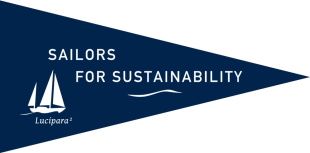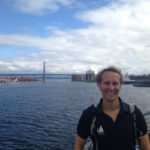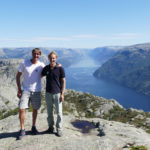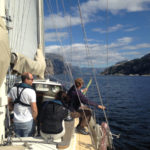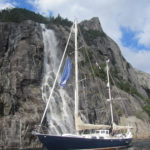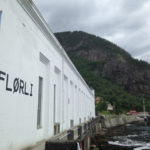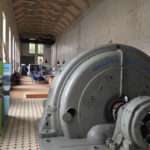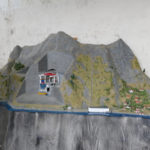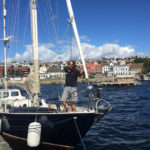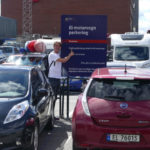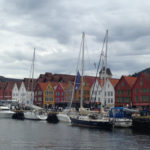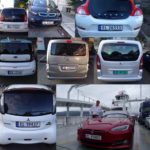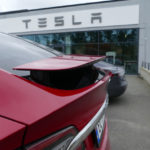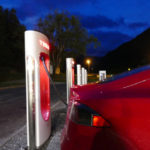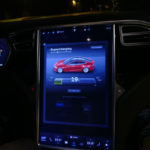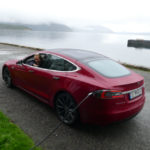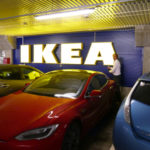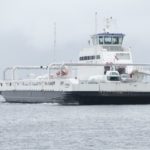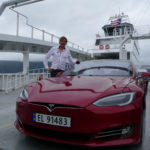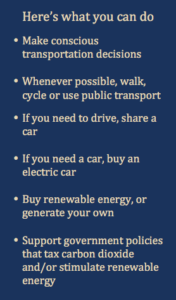Electrified Norway (NOR)
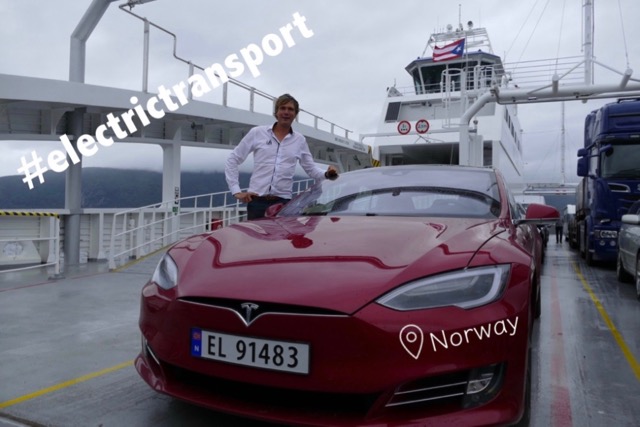
How hydropower generates electricity for electric driving and the world’s first fully electric car ferry.
Contributes to achieving the following UN Sustainable Development Goals:
An oil museum? It exists in Norway’s Stavanger. State oil company Statoil co-funds the museum, and it shows. Much attention is paid to the prosperity that oil has brought the Norwegians. It even made Norway one of the richest countries in the world. Until this day a third of the state’s income still derives from oil revenues and the sector creates thousands of jobs.
The downside of oil is also getting attention in the museum. Information about accidents, drilling in sensitive areas and pollution somewhat nuances the image of the black gold. At the exit of the museum visitors are asked to make a choice: should we give priority to ecological considerations or prosperity? But is it really one or the other? Aren’t we being offered a false choice?
Hidden Hydropower
We decide to find out if we can find alternatives to oil in Norway. As we sail into the Lysefjord, sparkling waterfalls and rock formations of a thousand meters high on both sides of the narrow fjord create a breath-taking panorama. We feel tiny in our sailboat. Besides a small settlement at the end of the thirty kilometres deep fjord, there is only one place to moor: Flørli. An industrial building stands out: once an old hydroelectric power station, now a museum on hydropower.
We learn that 98% of the Norwegian electricity production is renewable, a world record. The main source behind this remarkable succes is hydropower. Yet we have only seen very little hydropower infrastructure and this one was taken out of service. So how do they do it? “Many plants have been built in the rock,” the museum director explains. “That is also the case for the new power plant that has replaced this old one here in Flørli.” The iconic fjords therefore remain relatively unaffected, while enough electricity is generated to provide almost all Norwegians with renewable energy.
Optimal Use of Natural Conditions
After World War II Norway intensified the construction of hydroelectric plants. The regulations for conservation lagged behind, sometimes resulting in dry riverbeds. By applying environmental considerations and stricter rules, nowadays the natural watercourse is affected as little as possible. Fish ladders ensure that fish can reach spawning grounds. It makes this form of renewable energy truly green.
Hydropower supplies a relatively constant flow of energy, so how do the Norwegians deal with peaks in their electricity demand? Rainwater and melt water from glaciers is gathered in mountain lakes. The water is led through tunnels to the reservoirs of the hydroelectric plants. These reservoirs play a key role in water management, drought or impending floods. If necessary, they release more or less water to the plants.
The reservoirs also ensure that Norwegians have access to sufficient, cheap, renewable electricity at any time of the day. This is often used for cooking and heating. And increasingly also to charge cars, because Norway is the world champion in electric cars. A quarter of the new cars sold runs on electricity. And it shows.
Electric Cars Everywhere
From Larvik we take a direct train to Oslo, Norway’s capital. As we paddle through the city on rental bikes, we see quite a few electric cars on the streets. They are easily recognizable with their licence plates starting with “EL”. All major car manufacturers have a hybrid or fully electric version on the market here. We come across a parking place that is filled with them. Just as we wonder why, we notice a sign stating that electric cars can park for free.
Our research continues in Bergen, where we are moored in the tourist centre: Bryggen. Once we get off the boat, one electric car after another whizzes by. Electric cars are clearly very popular, not only because of the environmental benefits. The Norwegians have a policy that favours electric driving. We learn that tax exemptions and rebates on toll roads also make it financially attractive. In addition to free parking, electric cars may use bus and car pool lanes.
We also want to give it a try! We look for a way to get an electric car. That’s easier said than done. It seems impossible to rent one. Maybe we can arrange a test drive? We ask various dealers and, indeed, many invite us to drive their cars. However, just for an hour and under supervision. That won’t get us to our intended destination: the world’s first electric car ferry “Ampere”. After a few calls to the Tesla customer service in which we explain our mission, they generously offer us a Tesla Model S for the weekend. On to the Sognefjord, where the “Ampere” operates!
Silently Along the Fjords
After a brief explanation of the Tesla, we silently drive through Norway’s spectacular landscape. The powerful electric engine and the beautiful design of the car impress us. The technical gadgets keep us entertained, too. The car can drive autonomously between the white lines and we can listen to Spotify music via the Internet.
At some point during our trip, we are puzzled when the on-board computer predicts a higher load status at our destination than we currently have. We still have to drive twenty kilometres! Our amazement turns into admiration when the road starts to descend considerably, allowing the batteries to be recharged. The predicted load status on arrival turns out to be exactly right.
A Step in the Right Direction
Electric cars have been through an enormous development. Charging can be done ever faster and at more and more locations. The range per battery charge has risen sharply. And the vehicles are becoming more affordable. Fossil fuel is not needed, which saves a lot of money and has considerable environmental benefits. And they do not emit carbon dioxide, provided they are charged with renewable electricity, of course.
At the same time owning an electric car privately can’t be the only solution to sustainability challenges in transportation. For the production of an electric car and its batteries, scarce resources are needed. And all cars emit unhealthy particulates in the air, due to brake and tire wear. If we are to make a substantial difference, we should drive less, should make more use of public transport or bicycles, and should share cars more often. The electric version that is, of course.
The World’s First Fully Electric Car Ferry
When we arrive at Lavik to cross the Sognefjord, we see a ferry coming in the distance. The connection to Ytre Oppedal is part of the highway along the Norwegian west coast. The “Ampere” has replaced an older ferry that used around one million litres of diesel per year, emitting approximately 570 tons of CO2 and 15 tons of NO2. The Ampere is the first fully electric car ferry, operated by ferry company Norled. It was made by Siemens and the Norwegian shipbuilder Fjellstrand. With its eighty meters it can carry 120 cars and 360 passengers.
Even before the ramp goes down and the traffic drives off, the Ampere is connected to the on-shore charger. On both sides of the fjord the ferry can recharge, which takes about ten minutes. Once on board, we relax and enjoy the view over the fjord. We breathe the fresh, clean air while the Ampere moves quietly forward.
Sustainable Prosperity: a Matter of Choice
In Norway, the electric revolution seems unstoppable. The energy is almost fully sustainable, due to investments in hydropower. The country makes clever use of the natural conditions. It encourages electric transportation. Partly paid for with oil revenues, but that is a conscious political choice for sustainability. The policy measures stimulate innovation and facilitate the transition to all fossil-free transportation.
Renewable energy can ensure that prosperity and sustainability go hand in hand. It creates a type of prosperity that is based on a future-proof resource instead of a finite one. This prosperity is also based on wellbeing, because we keep our planet liveable. So it is indeed very appropriate that oil in Norway has already become a museum piece.
Related Sustainable Solutions

Solar Boat (GRC)
Has the future of motor boating arrived? After meeting both a prototype and a commercial solar boat we surely think so!

Fair Transport (PRT)
In Porto we moor next to Fair Transport’s sailing cargo vessel Tres Hombres. Their mission: to promote emission-free transport and to minimize transport.
